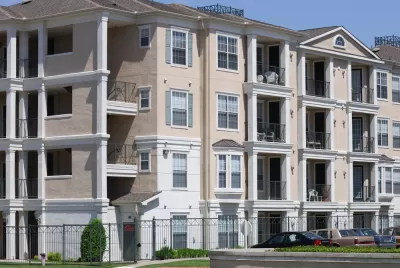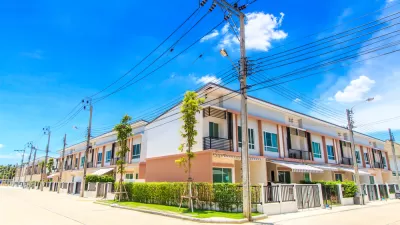Even with new funding proposed in the infrastructure package, voucher recipients face severe challenges in finding landlords that will accept them.

Among the proposed cuts to the proposed infrastructure spending package, reports Abby Vesoulis, is the $75 billion allocated for Housing Choice Vouchers. But even if the funding goes through, "the discussion underscores a central problem with the existing system: there’s a critical shortage of affordable housing units where people can actually use their vouchers."
Today, the program provides 2.3 million households with vouchers. "That’s nowhere near enough: only one in four people who qualify for federal housing assistance currently receive support, according to the left-leaning Center on Budget and Policy Priorities (CBPP), and those who do must wait an average of 2.5 years before receiving a voucher." While the new funding, if approved, would provide 750,000 additional vouchers, "a more systemic, and perhaps more intractable problem remains: once families get vouchers, they often struggle to find landlords who will accept them."
Some landlords "complain about the long lead times it takes between showing a tenant an available unit, going through the mandatory inspection process, making any needed repairs, and obtaining final PHA sign-off." If the vouchers were "a lot more like cash," they say, it would make the process easier for them.
Even so, "affordable housing advocates argue that more federal funding will at least begin to address some of the problems at hand," giving more families an opportunity to start looking for housing.

Planetizen Federal Action Tracker
A weekly monitor of how Trump’s orders and actions are impacting planners and planning in America.

Congressman Proposes Bill to Rename DC Metro “Trump Train”
The Make Autorail Great Again Act would withhold federal funding to the system until the Washington Metropolitan Area Transit Authority (WMATA), rebrands as the Washington Metropolitan Authority for Greater Access (WMAGA).

The Simple Legislative Tool Transforming Vacant Downtowns
In California, Michigan and Georgia, an easy win is bringing dollars — and delight — back to city centers.

The States Losing Rural Delivery Rooms at an Alarming Pace
In some states, as few as 9% of rural hospitals still deliver babies. As a result, rising pre-term births, no adequate pre-term care and "harrowing" close calls are a growing reality.

The Small South Asian Republic Going all in on EVs
Thanks to one simple policy change less than five years ago, 65% of new cars in this Himalayan country are now electric.

DC Backpedals on Bike Lane Protection, Swaps Barriers for Paint
Citing aesthetic concerns, the city is removing the concrete barriers and flexposts that once separated Arizona Avenue cyclists from motor vehicles.
Urban Design for Planners 1: Software Tools
This six-course series explores essential urban design concepts using open source software and equips planners with the tools they need to participate fully in the urban design process.
Planning for Universal Design
Learn the tools for implementing Universal Design in planning regulations.
Smith Gee Studio
City of Charlotte
City of Camden Redevelopment Agency
City of Astoria
Transportation Research & Education Center (TREC) at Portland State University
US High Speed Rail Association
City of Camden Redevelopment Agency
Municipality of Princeton (NJ)





























